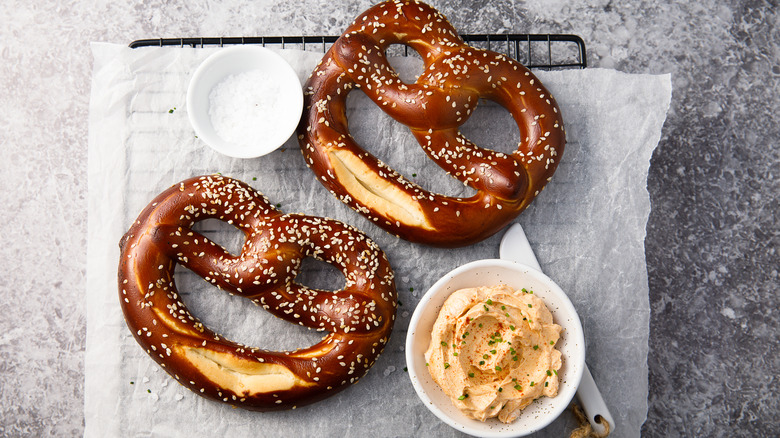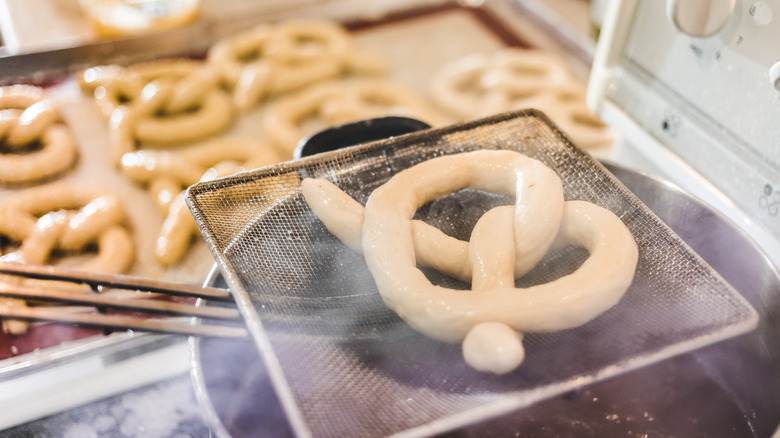The Expert Tip You Shouldn't Skip When Making Soft Pretzels At Home
We may receive a commission on purchases made from links.
A fantastic soft pretzel is all about textural contrasts. The snap of the almost tangy exterior gives way to the pillowy interior. Add a dip of butter, beer cheese, or sharp mustard, and many Germans and Midwesterners would be in heaven.
Achieving the perfect crust on homemade pretzels requires some finesse. Food Republic turned to expert Tessa Arias, author of "The Ultimate Cookie Handbook" and founder of the website Handle the Heat, to understand the magic behind the tasty snack. Her answer was to employ the time-tested trick of using lye, a strong alkaline chemical, to alter the pH of the dough's surface and encourage browning.
"For the absolute best deeply caramelized crust with that distinct pretzel flavor, dip your shaped pretzels in a lye solution before baking," Arias said. Lye is commonly used in soap-making and cleaning, as well as to preserve foods like olives and, of course, to make the beloved bready twists. "This is the traditional method and truly isn't as scary as it seems ... If lye isn't an option, use a baking soda bath to achieve a similar effect."
Using lye to form snappy soft pretzels
The quick step of submerging the knots in the food-grade, diluted lye solution before baking has a large impact on the bread's reaction to heat. It encourages the dough to morph into the deeply browned crust we know and love. The dip triggers and encourages the Maillard reaction, resulting in the deep brown of a Bavarian pretzel. Without it, soft pretzels will emerge from the oven looking pale and less appetizing.
Alkaline falls on the opposite end of the spectrum as acidic, meaning the lye mixture is extremely basic. As it's caustic, home cooks should use it in an area with good ventilation, handle it while wearing gloves and eye protection, and be sure to wash any parts of their skin that come into contact with the solution. Though that sounds intimidating, expert Tessa Arias believes the step is worth attempting because of its dramatic effect on the flavor.
However, cautious bakers can also turn to another basic ingredient and helpful cleaner, baking soda, to achieve a comparable effect on snacks like German pretzel buns. Although the pantry ingredient is less alkaline, it will still make an impact on the dough when combined with hot water. That said, the final result will have less of the trademark glossy brown hue. Regardless of your approach, use a nonreactive bowl (stainless steel or glass) and a slotted spoon to hold the liquid and dip the twists to keep your space free of the corrosive substances.


